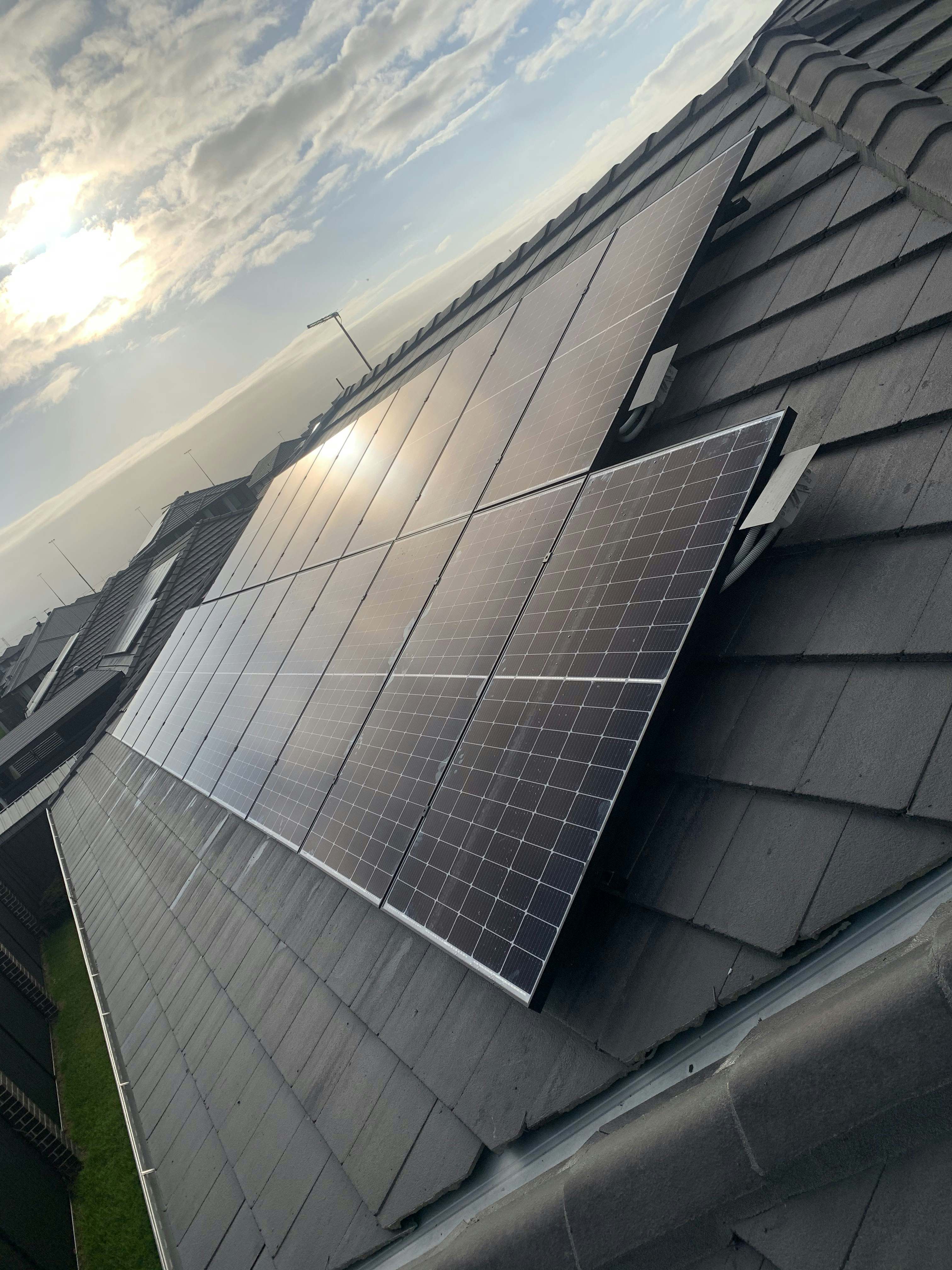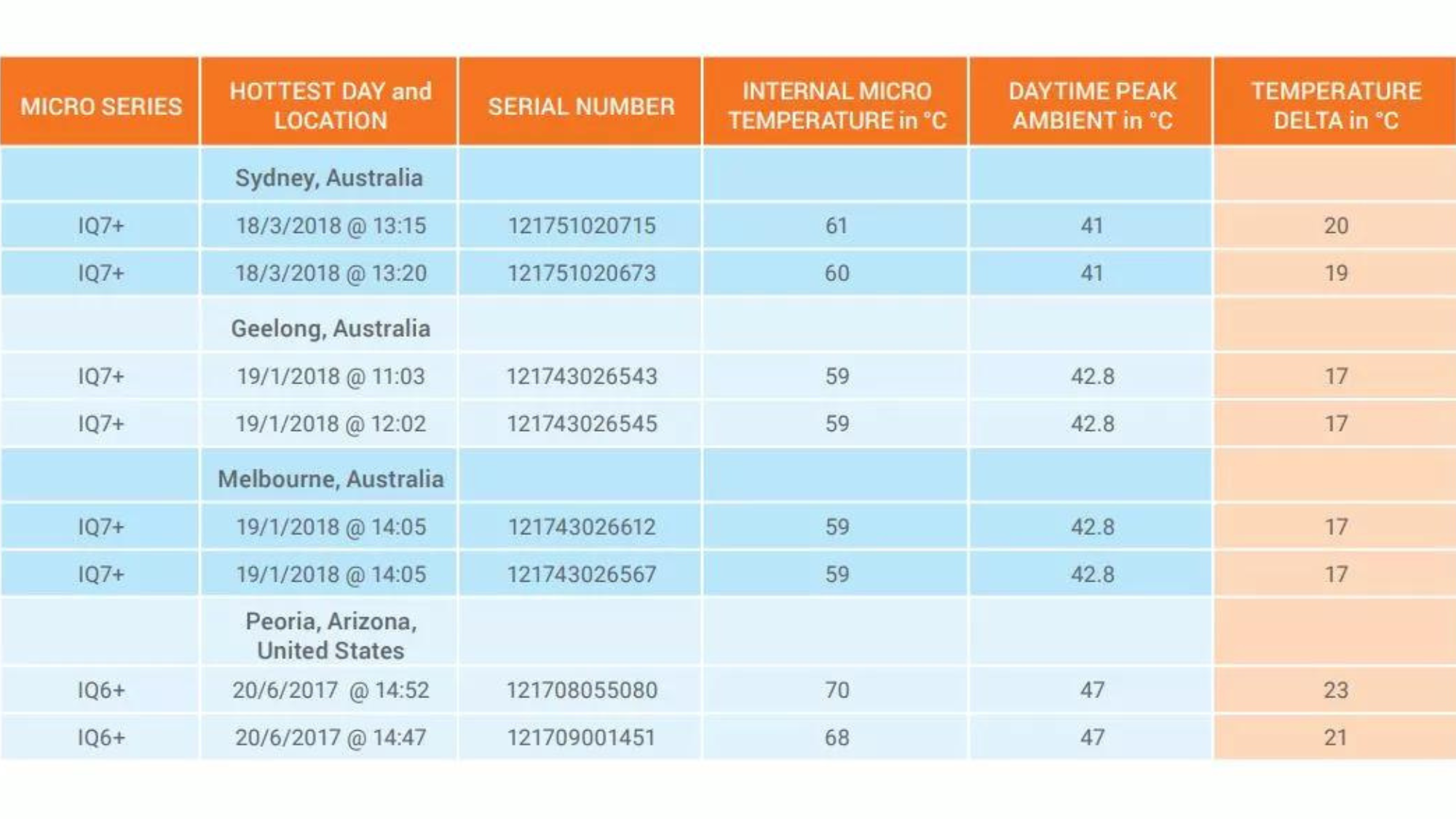Solar
Solar
Battery Storage
Battery Storage
Battery Storage
EV Charger
EV Charger
EV Charger
Heartbeat
Smart Energy Manager
Heartbeat
About Us
About Us
Learn
Featured Articles
Sizing Up A System
Finance & Rebates
Learn
Now servicing New South Wales, Victoria, Queensland and South Australia
Request PricingHigh heat is the enemy of every solar system. Panels produce less and components are subjected to extreme stress when the temperature rises.
Because microinverters are located on the roof under each panel, you might think that this would affect performance. Not for an Enphase microinverter!

When designing the IQ microinverters, Enphase product engineers applied a decade of reliability lessons learned from over 17 million microinverters. IQ uses proven components, and it passes all measures of Enphase’s rigorous, million-hour reliability test. IQ has also been successfully field-tested on rooftops in Australia and Arizona, two of the hottest places in the world in summer.
IQ has a double-insulated, corrosion resistant enclosure made of Noryl V0150B, a modified polymeric resin that meets the same performance standards as a genuine Multi-Contact MC4 solar connector. It also has patented potting to conduct heat away from microinverter electronics, auto-grade parts to resist cracking under thermal cycling, and no moving parts that could generate heat inside the microinverter.
Enphase engineers say these features help IQ perform in the most extreme heat on Earth:

Field-data shows that extreme heat does not shut down IQ microinverters. In Australia, the internal microinverter temperature stayed within 17-20° of peak ambient temperature. In Arizona, the difference was 23°. IQ can withstand this much heat gain anywhere on Earth.
Microinverters have a built-in advantage in keeping cool. Heat generated inside the device is lower than in traditional inverters because each unit converts a small amount of power, one solar module at a time.
Microinverters also get help from their enclosures, which act as a heat sink to keep the electrical components from getting too hot. These features keep our microinverters well under their maximum internal operating temperature of 85°C, even in record heat.

1KOMMA5° installers who work with Enphase follow best practices to mitigate the effects of high rooftop temperatures on our microinverter systems.
First, microinverters must be mounted beneath the solar module so there is no exposure to direct sunlight. Installers also allow at least 1.3 cm of spacing between the microinverter and module and at least 1.9 cm to separate the inverter and the roof. In all cases, there will be enough room for air to circulate underneath the array.
Our solar experts will help you find the right system for your home.

Get all the right information before installing a solar power system for your home.
